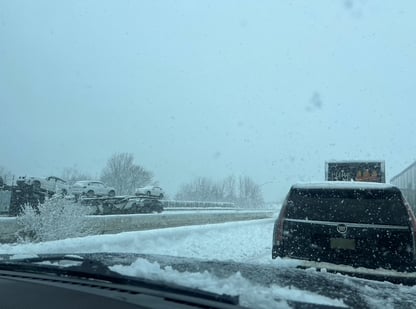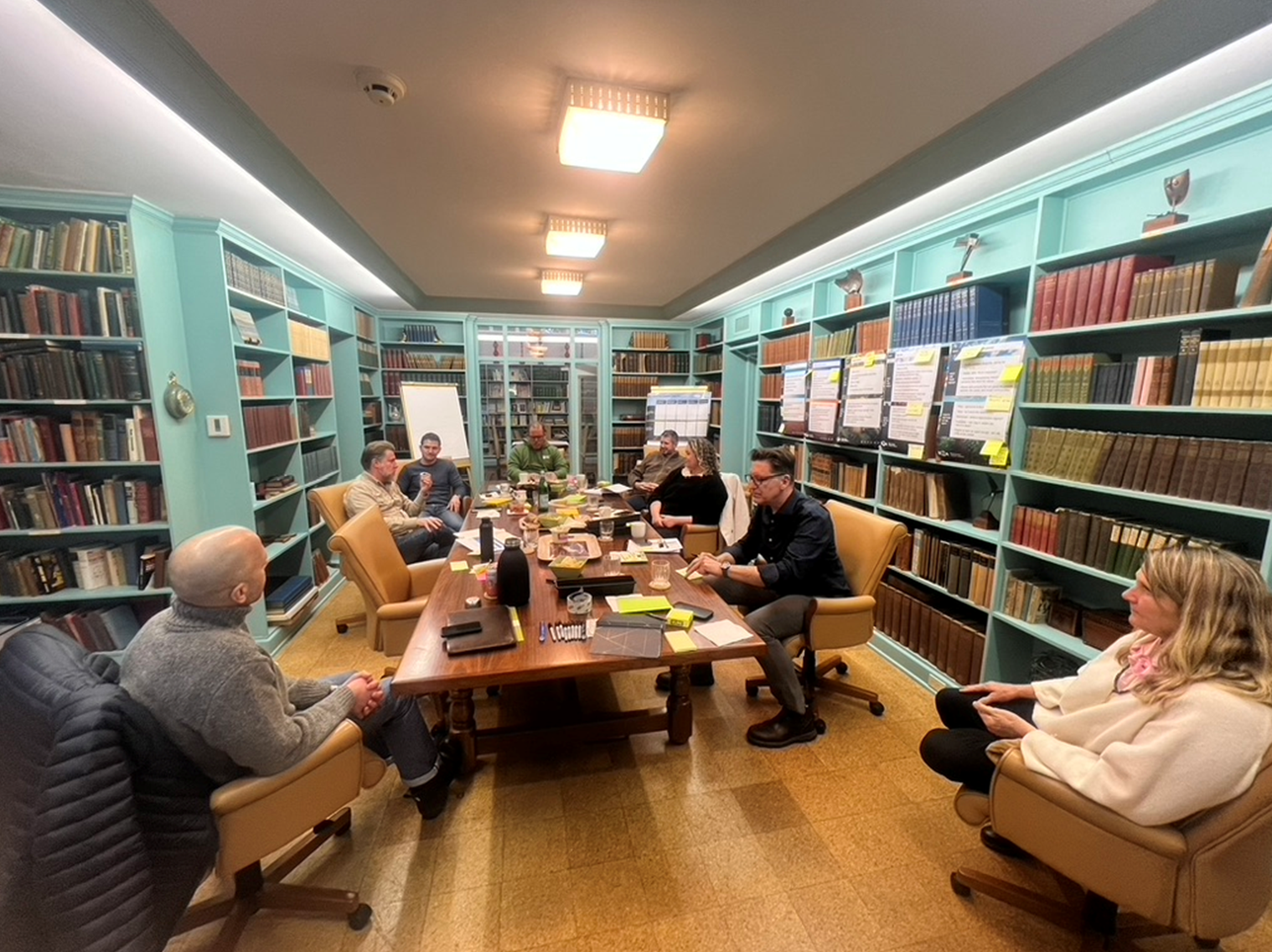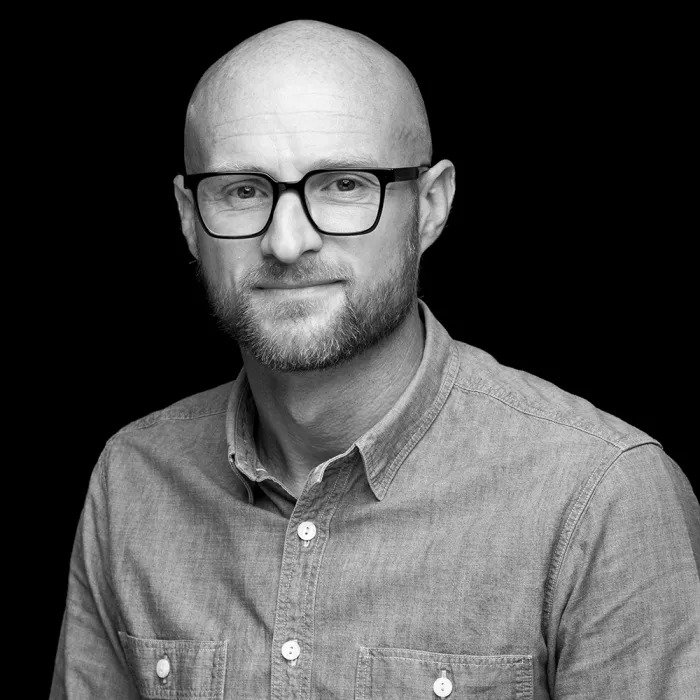Cultivating Change: Advancing the Regenerative Organic Movement with Oxford and the ROA
Last month, Andrew Watson and I had the pleasure of running our second workshop with the Regenerative Organic Alliance, to follow the first one we’d done back in September at their Summit at Pocono Organic’s amazing site.
| I say pleasure, but the journey there was anything but pleasurable. A huge snowstorm had blown through the Northeast USA the morning of the workshop, meaning I had to drive for the first time in 6 years in Manhattan in an unfamiliar car and in driving snow – not the best prep for a workshop, and we quickly switched to Andrew’s more capable driving and truck en route. |  |
| We arrived later than planned, but given the snow, so did everyone else. We were hugely lucky to be able to run the session at the Rodale Lodge, the home of J. I. Rodale, the celebrated publisher and founder of the Soil Health Foundation, which became the Rodale Institute. It felt like a very historic venue, and as well as being the home of J. I. Rodale, it was also the place where the ROA itself was founded – quite a fitting place for our workshop given what we were aiming to cover. |  |
As well as Andrew and I from Oxford, we were joined by members of the ROA, Rodale Institute, and owners of some of the amazing Regenerative Organic Certified brands—as with the last workshop, an awe-inspiring group of people who have dedicated their lives to growing the regenerative organic movement, making the world a better place to live for people and animals, and helping to reverse climate change.
The workshop was designed to frame the ambition for the ROA and the steps we might take to get there. When the benefits of regenerative agriculture are so extensive and wide-ranging, encompassing increasing soil health, human health, animal health, the health of rural communities and farmers, and ultimately the long-term health of the planet, it can be difficult to know quite where to start.
We quickly realized that defining an overarching ambition would be very hard and that breaking it down into steps with the different target audiences was a more realistic approach. By defining who we might need to talk to, to really kick start the RA movement, we were able to sequence our approach into ambitions for 2026, 2030, and 2035.
By defining who we might need to talk to to really kick start the RA movement, we were able to sequence our approach into ambitions for 2026, 2030, and 2035.
These different stages covered different audiences, which means the movement can be grown sustainably by focusing on people who are already engaged first, and then broadening the focus to people who are less aware in the long-term. It also means advocacy for regenerative brands and products will be built over time, and the role of different stakeholders, from retailers to regulators to influencers, was captured in building the movement.
Once we had defined the ambition, and the steps to get there by 2040, we moved on to understanding the enablers we’d need—those few critical things that would need to be in place for the ambition to come to life.
Critical to this is the story of regen and its benefits to these different stakeholders; developing a compelling story of why regen agriculture is key to meeting the future needs of the different stakeholders we identified. This will be underpinned using data from ROA certified farms and brands and from the research Rodale have been doing in this space for 30+ years. All of this will need to be brought together to show why regen agriculture is so beneficial and worth farmers, brands, retailers, and people adopting regenerative agriculture in their lives.
Other enablers included:
- exploring new ways of working to make the transformational change needed
- defining the key messages that will motivate people to change
- starting to remove some of the things that are currently getting in the way of growth: lack of access to processing and production, a lack of understanding around what regenerative agriculture is, and people in stores being confused around why they should buy
It was great to be able to harness the collective experience and passion of the people in the workshop, and our next task is to take the outcomes to a broader audience to get people’s buy-in and then get them involved in growing this truly amazing movement.
About the Author
Jonathan loves the particular. Taking on a project, and then setting aside past views and experiences to truly understand what a client needs is a real privilege, and one that he learns from every time.

Share this
You May Also Like
These Related Stories

Sowing Seeds of Change: Regenerative Agriculture

Capturing the value of Net Revenue Management

.png?width=657&height=57&name=OXFORD%20LOGO%20(1).png)
No Comments Yet
Let us know what you think